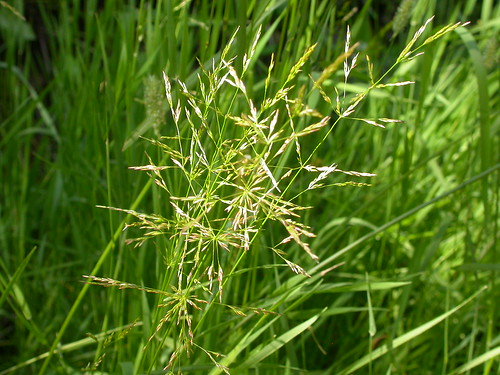The grasses we use to produce fine turf playing surfaces fall into 2 main categories in relation to the way they grow and spread. These are Bunch Type Grasses and Creeping Grasses. The creeping grasses are split into 2 further groups, namely those that spread by use of rhizomes and those that spread by means on stolons.
Bunch-type turf grasses, spread almost exclusively by tillering. Tillering is when new shoots occur from the crown of the parent plant. This means that in order for bunch type grasses to produce a tight and uniform turf on their own they must be seeded at quite a high rate and great care must be taken to ensure that there is no space for weeds or rogue grasses or the turf will quickly become contaminated and lacking in uniformity
This is a particular problem at low seeding rates where isolated plants form small clumps with too much bare space between creating a non-uniform surface. This is a particular characteristic of perennial ryegrass, tall fescue, annual meadow grass and others.
Chewings fescue is a bunch type grass that is very commonly used in bowling green mixtures.
The creeping grasses fall into 2 types as mentioned and the first of these we will look at are the rhizomatous grasses or those spreading by means of underground shoots called rhizomes.
Due to the occurrence of rhizome nodes on these shoots at distance from the mother plant, vigorously rhizomatous grasses can form uniform turf with shoots with more or less upright growth which is preferable to procumbent or flat growth in our quest for a consistently paced green. Smooth Stalked Meadowgrass and Creeping Red Fescue are examples of rhizomatous grasses commonly found in finer turf.
The second and possibly most important creeping grass types for fine turf production are the stoloniferous grasses, or those spreading by overground creepers.
The use of creeping bent grass in fine turf is quite common but it brings with it a high level of maintenance as the turf produced from stoloniferous grasses can consist of a lot of flat growth which has to be teased up before mowing in order to achieve a perfectly smooth and uniform surface.
Creeping bentgrass although able to produce a very fine and tight knit sports turf can become increasingly grainy if the mowing height is too high. This grass also produces a lot of thatch which must be controlled though mechanical means even in healthy living greens where there is ample microbial activity.
Photo thanks to Matt Lavin via Compfight


